Matador Network's Blog, page 927
February 5, 2020
Sexiest museums in the world

It’s hard to sell museums as sexy. Educational? Check. Romantic? Sure. They make great date spots. But nobody’s lining up outside the Louvre with their significant other to get in the mood. There are select museums that do fit the description, however, showcasing adult-themed art and artifacts that are as steamy as they are informative. From erotic antiques to vintage pornography, here’s what’s on offer at the 11 sexiest museums in the world.
1. Museum of Sex — New York City, New York
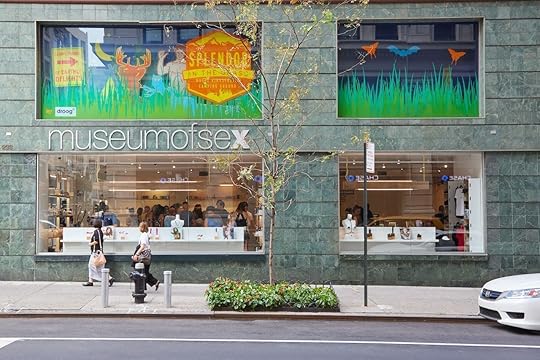
Photo: andersphoto/Shutterstock
Museum standards are high in New York City. Holding its own against the likes of the MoMA and Met, the Museum of Sex, or MoSex, was a pioneer in its field when it opened in 2002 and remains one of the best tributes to human sexuality in the museum world. There are over 20,000 pieces in the permanent collection spanning various mediums, including painting, sculpture, film, photography, and fashion. Exhibits vary, covering topics from pornography to the sex lives of animals, though they tend to focus on sexuality in the modern era.
Where: 233 5th Ave, New York, NY 10016
2. Icelandic Phallological Museum — Reykjavik, Iceland
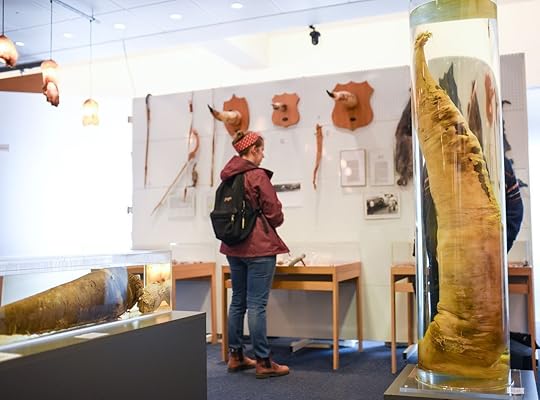
Photo: Chalie Chulapornsiri/Shutterstock
Scientific might be a better descriptor for the Icelandic Phallological Museum than sexy, but with over 200 phallic specimens from Iceland’s mammalian populations on display, we couldn’t leave it off the list. That’s right: You can actually compare and contrast the penile parts of 16 different whale species, a polar bear, and even a human here. In addition, you’ll find folkloric and foreign artifacts, as well as around 350 artworks and related items.
Where: Laugavegur 116, 105 Reykjavík, Iceland
3. Vagina Museum — London, England

Photo: Vagina Museum/Facebook
London’s new Vagina Museum, opened in November 2019, desexualizes vaginas in favor of educating visitors about vaginal health and anatomy, working toward overcoming the stigmas surrounding vaginas, and serving as a safe, feminist space for all women, however they identify. And we think that’s pretty sexy too. See exhibits like “Muff Busters: Vagina Myths and How to Fight Them” or attend events like Cliterature, the museum’s book club, and Bajina Bingo.
Where: 17/18 Stables Market, Chalk Farm Road, London, NW1 8AH
4. World Erotic Art Museum — Miami Beach, Florida

Photo: World Erotic Art Museum
If it’s erotic works by world-famous artists like Picasso and Klimt you’re after, pack your bags for Miami Beach. Beyond fine art, the World Erotic Art Museum also showcases collections ranging from Gay Art to Humor to Indigenous Art of the Americas, as well as works from India, elsewhere in Asia, and parts of Africa. Exhibitions are thoughtful and thought-provoking, tackling subjects ranging from the Kinsey Institute to the history of erotic art in “From Pompeii to Pin-Up.”
Where: 1205 Washington Ave, Miami Beach, FL 33139
5. Love Museum — Seoul, South Korea

Photo: 러브뮤지엄 Love Museum/Facebook
Seoul’s Love Museum organizes its content into six galleries: Fun and Sexy, Femme Fatale, Dream House, Sex Life, Erotic Garden, and Korean Erotic Painting. The collection spans centuries, from Joseon dynasty erotica to contemporary 3D paintings. Encouraging openness around the themes of love and sex, this is the rare museum where guests are encouraged to interact and pose with installations, whether you want a photo with a cutout of Lady Godiva astride a horse or a super-sized sculpture of male genitalia.
Where: 홍익로 3길 20 서교프라자 B1 러브뮤지엄, B1 floor, Seogyo Plaza 20 Hongikro 3gil, Mapogu, Seoul, Mapo-gu, Seoul, South Korea
6. Sex Machines Museum — Prague, Czech Republic

Photo: Sex Machines Museum
The phrase “sex machine” loses some of its luster when referring to actual machinery, but this three-floor museum housing 350 sex-related items and installations might just make you blush. You’ll see sex toys, accessories, and erotic art from around the world and throughout the ages. You can even catch a screening of an early 1900s adult film in the vintage-style Old Erotic Cinema. Note: Visitors must be 18 and over with valid ID.
Where: Melantrichova 476/18, 110 00 Staré Město, Czechia
7. Erotic Heritage Museum — Las Vegas, Nevada

Photo: Erotic Heritage Museum
Formally known as the Harry Mohney Erotic Museum after the pornographer who co-founded it with Reverend Ted McIlvena, this museum celebrates sexuality as an expression of humanity. Exhibits spotlight various artists of the month and explore topics like the evolution of human sexuality, sex in space, and sexuality under the Third Reich. Events tend to skew more light-hearted, such as the past Puppetry of the Penis and The Art of Naked Yoga.
Where: 3275 S Sammy Davis Jr Dr, Las Vegas, NV 89109
8. Sexmuseum Venustempel — Amsterdam, Netherlands

Photo: Alexey Pevnev/Shutterstock
Amsterdam has not one but three adult museums: the Erotic Museum, Red Light Secrets Museum of Prostitution, and Sexmuseum Venustempel. If you only have time for one, it has to be Venustempel, which claims to be the oldest sex museum in the world. A statue of Venus, the Roman goddess of love and sex, greets guests at the door, beyond which they’ll see everything from vintage sex toys to Victorian photography and hear audio recordings by famous figures.
Where: Damrak 18, 1012 LG Amsterdam, Netherlands
9. Secret Cabinet at the National Archaeological Museum — Naples, Italy

Photo: Museo Archeologico di Napoli/Facebook
Unknown to some, the National Archaeological Museum of Naples stores a collection of ancient erotica from Pompeii and Herculaneum that women were at one time forbidden to see. It’s known as il gabinetto segreto, or “the secret cabinet,” and showcases explicit frescoes, naughty inscriptions, x-rated mosaics, and more. Though open to the public, the collection is displayed separately, and visitors should book a viewing at the museum’s front desk.
Where: Piazza Museo, 19, 80135 Napoli NA, Italy
10. Erotic Museum — Barcelona, Spain

Photo: Erotic Museum of Barcelona/Facebook
Barcelona’s Erotic Museum sits smack in the middle of La Rambla, the city’s main pedestrian boulevard, opposite La Boqueria, its most famous market. Inside, there are over 800 erotic artifacts on display, spanning from the Upper Paleolithic era to today. Learn more about kama sutra, see Picasso’s sordid work, or peek into the world of fetishism. Temporary exhibits add to the range of themes explored, contributing everything from sex-cessories to phallic artifacts.
Where: La Rambla, 96 bis, 08002 Barcelona, Spain
11. Underpinnings Museum

Photo: The Underpinnings Museum/Facebook
If the word “sexy” makes you think lingerie, not whale genitalia, you might appreciate the Underpinnings Museum. Hosted entirely online, the museum is dedicated to the history of women’s intimates, featuring a collection of vintage corsets, slips, bras, girdles, stockings, robes, and more. Some come from big-name designers like John Paul Gaultier. Exhibitions dig deeper than the garments themselves, delving into subjects like the modern corset and bra technology. That’s a pretty good deal for a tour you can take, for free, in your pajamas.
Where: Online 

More like this: Orgasm workshops are a thing, and these are the best ones to try
The post The 11 sexiest museums in the world appeared first on Matador Network.

Check how many people have same name

A question some have undoubtedly asked more than others is: “How many people are there in the world with my name?” Now, if your name is John Smith, you probably haven’t asked yourself that, to avoid feeling like a small drop in a vast ocean of John Smiths. If you have a more unique name, however, the question has likely crossed your mind. And now, you can get your answer.
The website How Many of Me is helping people all around the US find their namesakes. The site uses data from the 2000 census to help you look up your first and last name, and find others with matching names. According to the website, there are over 151,671 different last names in the US, and 5,163 different first names in common use. It’s not, however, an exact science. “The program returns an estimate based on the available date,” the website says. “It should be considered a ‘ballpark figure.’”
And in case you’re one of the lucky thousands actually named John Smith, you can save yourself the search; there are 47,864 of you in the US. There are also 110 Harry Potters, 1,041 James Bonds, 1,655 people with the first name Daenerys, and 46,344 people named Elsa. So if you were thinking of naming your child after your favorite fictional character — you’re not exactly the first. 

More like this:
The post appeared first on Matador Network.

Where to find vegan tacos in CDMX
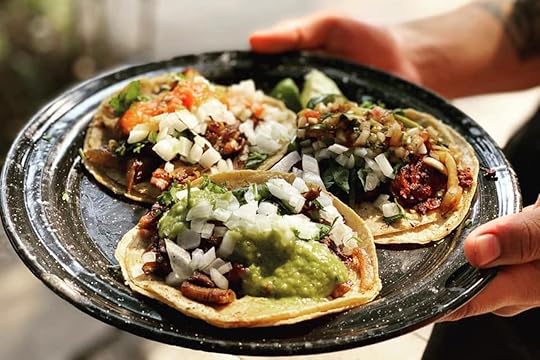
Mexico City is replete with meat-centric street food. Corridors of contiguous street vendors extend for city blocks griddling mountains of meat while swarms of people gather to order tacos during la hora de la comida. While most stands have vegetarian options, vegan taco stands are nascent and on the rise. Veganism — once an epithet for expensive yogi food — is being redefined in Mexico City by people like Luis Rodríguez and Melissa Ayala, who are introducing plant-based proteins into local cuisine and traditional dishes like the street taco.
Luis Rodríguez, the founder of one of the first vegan taco stands in Mexico City, Por Siempre Vegana, is a source of inspiration for vegans trying to disrupt the foodscape at a local level. Por Siempre Vegana was founded in 2006 because Rodríguez — a chilango, or resident of Mexico City — didn’t want his veganism to prevent him from partaking in an integral part of Mexican food culture: the taco stand.
“Taco stands have specific characteristics that are emblematic and ubiquitous,” Rodríguez says. “Regardless of where you are in Mexico, taco stands will have a similar aesthetic, flavor profile, smell, and feel to them. When I opened Por Siempre Vegana, I wanted to preserve these characteristics while offering plant-based options as an alternative to meat.”
Rodríguez is altering the local foodscape by making dramatic changes in the source of protein in tacos. He does not expect people to pay more for something unfamiliar, nor is he asking people to associate veganism with foreign flavors. With Rodríguez’s food, the choice to eat vegan is a simple one: The flavors are as good or better than meat. It’s a similar ethos as popular meat-imitation brands like Impossible Foods and Beyond Meat. Only, Rodríguez does not concern himself with recreating the red hue of a medium-rare cooked hamburger. The vegan al pastor tacos at Por Siempre Vegana have the same iridescent orange color to them as al pastor tacos made with pork.
Next to the griddle in Por Siempre Vegana, a skewer pierces through layers of plant-based protein stacked one atop the other into a conical form. A bright slab of pineapple crowns the shape. From color to texture to smell, this vertical rotisserie is evocative of the al pastor cones found spinning slowly in so many taco stands around Mexico City. But the sliced ribbons of marbled meat that fall into the tortilla are vegan and not pork.
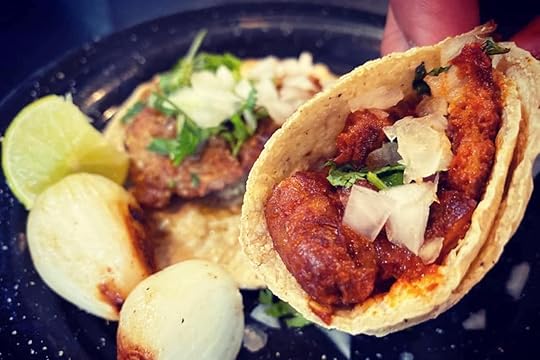
Photo: Por Siempre Vegana
Rodríguez is hopeful when he talks about the future of the vegan movement in Mexico City.
“Food stands are embedded in the eating experience of our culture, and they are an economical way of eating,” Rodríguez says. “It makes spreading veganism in an economical way feasible and scalable.”
There are many aspects of Por Siempre Vegana that make it a worthwhile stop if visiting Mexico City. After trying the al pastor and green chorizo taco, you might find yourself circling back to this inconspicuous taco stand that attracts everyone from neo-punk anarchists to itinerant travelers. It probably won’t be because they are great vegan tacos — they are simply great tacos.
The flavors that celebrate the history and traditions of Mexican cuisine are passed down in marinades, salsas, and moles. Al pastor — the quintessential Mexican taco — does not refer to thinly sliced pork, but rather to the marinade of chiles that coats the pork. The display of colorful salsas and pickled vegetables at a taco stand hint at the essence of a taco: Meat is another topping along with the spice of salsas, the crunch of cabbage and onion, the bright flavor of pickled carrots, and the freshness of chopped cilantro and squeezed lime.
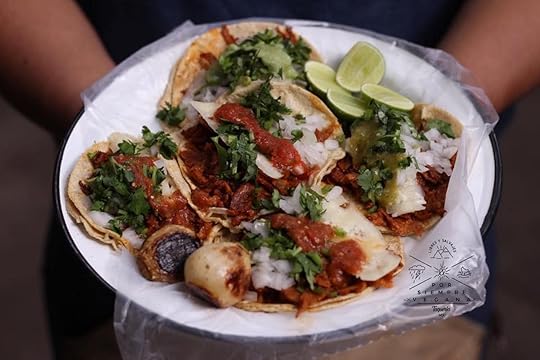
Photo: Por siempre vegana taquería/Facebook
Melissa Ayala, the founder of Gatorta, greets me at her vegan taco stand on the fringes of Mexico City’s Roma neighborhood. She stands behind a smoking griddle chopping and mixing faux meats that smell similar to the real thing. Her body is scrimshawed with cat tattoos and her face framed by fantasy color dreadlocks. Her turquoise-trimmed taco stand with Maneki-neko cats perched throughout — their paws waving rhythmically — stands out from the metallic street vendors that flank her.
Gatorta opened in 2016 to create foods that are representative of Mexican culture and eliminate animal suffering from the cuisine.
“We know people like the flavor of meat because we did!” Ayala says. “But we believed we could recreate the flavors that are so beloved in Mexico without the suffering.”
While prices at Gatorta are similar to those of its neighboring vendors, portions are more substantial than a standard street taco. “We offer larger portions because we want to compete with the market and to do so we need to attract people who don’t identify as vegan,” Ayala says.
Through trial and error, she and her co-founder, Ángel Gonzáles, perfected the masa, or dough, they use to create the plant-based tacos at Gatorta. Unlike the traditional masa made with corn flour that’s used to make tortillas, the masa at Gatorta is made with soy flour and wheat gluten, which are higher in protein. The marinades used in the al pastor, pibil, and suadero tacos are from recipes passed down to Ayala by her grandparents. While the curd-like texture of the vegan protein has a different texture than sliced pork and beef, the complex flavors of the al pastor taco are familiar. The pibil taco has citric undertones of orange and lime that are characteristic of the Yucatán-style barbecue, and the cardamom and clove seasoning is a creative take on the traditional suadero taco.

Photo: Gatorta – Torteria vegana/Facebook
Gatorta offers eaters the Mexican street food experience by serving traditional flavors, a standing experience, and economical prices while dispensing with the environmental impact of livestock products. “We use flavor to attract people rather than our beliefs,” Ayala says. “While animal rights, environmental factors, and health benefits drove us to veganism, we are aware that not all people share these beliefs, so if we can win them over through flavor, then we all are winning.”
Price, flavor, nutrition, and convenience cannot be overlooked by the vegan movement when thinking about factors that contribute to our meat-eating predilection. While companies like Impossible Burger and Beyond Meat are addressing these on an industrial level, Por Siempre Vegana and Gatorta are changing the foodscape at the local level by widening the breadth of vegan eating experiences. Vegan or not, venturing to try a taco from one of these stands is a unique way to experience Mexican street food culture.
Where to try vegan tacos in Mexico City
You can now buy a subscription to offset your carbon emission

Traveling can create quite the conundrum for anyone who wants to be a good citizen of the world.
On the one hand, getting out of your comfort zone and seeing other cultures, countries, and ways of life is imperative to your general understanding of the human condition. On the other hand, flying, driving, or doing pretty much anything other than walking to see said cultures, countries, and ways of life can leave a pretty toxic carbon footprint.
So what’s a well-meaning world traveler to do? While some airlines offer a carbon-offset donation to your airfare, sometimes in a rush to jump on a great travel deal you may forget. Or fly an airline that doesn’t offer one. But tour behemoth Intrepid Travel has a new approach, offering you a way to cancel your carbon emissions without even having to think about it.
Its new Offset Earth program allows you to make a recurring monthly donation for as little as $6.50, which goes toward planting trees in the Kijabe Forest in Kenya.
Trees, in case you’re not up on photosynthesis, breathe in carbon dioxide and exhale fresh oxygen, essentially the opposite of humans and more or less the only reason anyone on this planet can breathe. The more trees, the more oxygen, and the less harmful carbon dioxide from planes, trains, and automobiles in the air.
As a bonus, Intrepid will match your trees planted tree for tree. So for the base amount of $6.50, you’ll pay for the planting of 12 trees, which then becomes 24 when Intrepid matches it.
The trees will all be planted in the forest near Nairobi as part of the Eden Reforestation Projects. You don’t need to take any trips with Intrepid to subscribe, but if you want to visit your trees, the company will be running a few Kenya itineraries with stops in Kijabe.
Though the subscription service is a valuable step, Intrepid CEO James Thornton admits it’s but a small part of what travelers must do to act more sustainably.
“Carbon offsetting is a way to limit our damage while we explore new technologies to reduce our emissions globally,” he said. “But to make a real difference, we must all collectively work towards meaningful reduction strategies in our everyday lives.”
So while Offset Earth may not be the be-all, end-all solution to the conundrum of travel’s environmental impact, at least it’s doing something to help mitigate the damage. And for those who believe the good of seeing the world outweighs the impact of jet engines, it’s a painless way to minimize your impact. 

More like this: Your 2020 resolution: Travel to save the planet
The post You can now buy a subscription to offset your carbon emission appeared first on Matador Network.

February 4, 2020
Flying, hotels, cruises in 2040

Someday you’ll be able to walk on a plane using nothing but your face.
In that same era, you’ll be able to spend some time in your hotel room before you book it, immerse yourself in your destination while still on the plane, and jump in a tilt rotor drone for a business meeting 100 miles away. The year 2040 isn’t so far off, and all those things plus a slew of other cool stuff is waiting for us.
Or at least, so says noted futurologist Ray Hammond, who, in addition to writing 14 books on the future and getting a medal from Mikhail Gorbachev for his contributions, wrote a report for Allianz Partners on the future of travel. We read through the whole thing, and here are the highlights. Obviously, this is just speculation, and all statements should be taken with a grain of salt, but they do provide a pretty fun glimpse into what could be in the future if technology continues apace.
The booking process
Imagine if instead of the dull stock photos you see of hotel rooms on booking sites, you could actually step inside your hotel room, see how big it was, examine the storage situation, and feel out the work space. It’ll be possible when virtual reality becomes part of the booking process, allowing you to virtually spend time in your hotel room before making a reservation.
That VR experience will extend to stuff like museums and other attractions, too, so you can have a look at what they offer prior to making an itinerary. You’ll also have all kinds of virtual assistants to help you along the way, suggesting experiences that fit your interests in places you haven’t been.
Airports and train stations
Facial recognition software will be the huge game-changer here, as it’s already in use with some passport control kiosks and security checkpoints. In 20 years, your face will in effect be your boarding pass, allowing you to check in, pass through security, and board a plane. Iris scanners and fingerprinting devices will serve as backups, and wait times for everything from checking a bag to clearing customs will be cut dramatically.
Inside the airport, you’ll have virtual assistants pointing you to lounges, bars, restaurants, and other spots to kill time. Your bags will be handled by app-based services that pick up your bag at your house and deliver it to your destination. Such services already exist, but in 20 years, they may be the norm for those already willing to pay a premium to check luggage.
Airplanes
Perhaps the largest, most dramatic changes coming will be in the world of air travel. We may be flying in planes with no windows that project images of the sky outside instead. Many cruise ships do this with interior cabins now, and Emirates is considering it soon. The planes are lighter, and thus more fuel-efficient, and will be but one of many methods by which airlines reduce use of fossil fuels.
Rolls Royce is already working with Siemens to build a hybrid kerosene-electric passenger plane, a model which should be the norm in 20 years. EasyJet is currently looking at creating a fleet of wholly electric planes to fly routes under 335 miles and plans to have it up and running by 2027. Should that be successful, electric planes may become standard for short hops and regional jets.
Jet fuel won’t go completely by the wayside, though, as planes made today may well still be in the air into the 2040s. But developments in sustainable aviation fuel will affect the industry’s carbon footprint, and a move to fuels made from biomass is inevitable.
The potential for self-flying aircraft is there, where theoretically a plane could fly with one or no pilots. Though whether people would be comfortable flying like that remains to be seen.
On-board entertainment
Inside the plane, the experience will be dominated by virtual reality. Onboard entertainment will consist of virtual reality headsets in economy class, where you can pay a visit to your destination — or other destinations — without leaving your seat. Or just pretend you’re anywhere other than the economy cabin of a major airline.
Up in first class, the pod experience will go even further, with virtual reality pods transporting you to other cities with sights, sounds, and even smells, with onboard food letting you taste your destination before you get there.
Train travel

Photo: hxdyl/Shutterstock
Trains, predictably, will get even faster and more fuel efficient than they are today. Scheduling and train management will all be automated, eliminating human error and keeping the trains running on time. The EU is already experimenting with this in its European Rail Traffic Management System.
Trains will be nearly all-electric by 2040 or may run on hydrogen fuel cells like some British trains plan to by 2022. That won’t affect speed though, as most high-speed trains will run about 125mph, with super high-speed trains like the HS1 London-Bordeaux route topping 200mph. Engineers will become more like trip managers, as the trains will drive themselves much like cars and some airplanes.
Cruise ships
So much goes into the cruising experience that its future could be an entire report unto itself. But in addition to the virtual dining rooms, in-room assistants, and sustainable shore excursions, cruise ships will be moving more towards theme cruises and destinations. The number of places you can go via cruise ship will increase dramatically as destinations learn of their great economic impact. And they’ll be using liquid nitrogen gas to power ships to reduce their effect on the environment.
Onboard, you’ll be treated to nightly drone-produced fireworks shows above the pool deck. And you may also have robotic chefs preparing you in-room gourmet meals. Like on airplanes, you’ll find virtual reality headsets allowing you to visit a port of call before you get there, and get an idea of shore excursions you might want to take.
Hotels
Much like facial recognition will allow you to check in for flights, so will it allow you to check into your hotel without ever seeing the front desk. Your face will also act as your room key, so the days of having to go back down to the lobby when you forget to take your key to the ice machine are over. Nor will you have to embarrassingly ask for security when your phone dies and your “virtual” key isn’t working.
In-room virtual assistants are already in place in many lifestyle hotels, but they’ll be nearly everywhere by 2040. Packing may also be a lot easier as hotels will implement 3D printing for clothing. Meaning you can have a set of gym clothes printed cheaply and easily when you arrive. Or even have a winter coat ready when you visit a cold destination.
Though technology could completely eliminate the staff from a hotel, luxury properties will still offer in-person check-in for those who appreciate a human element. But for standard brands, that will be a thing of the past as online and mobile check-in will become standard.
On the street
No more will you need to bury your face in your phone reading Yelp! reviews to figure out where to eat dinner. Augmented reality glasses will allow you to look at a restaurant and instantly see its menu, reviews, and hours. So you can effectively scan an entire neighborhood to see what’s nearby.
Public monuments, city parks, and other landmarks will make similar use of that technology much like some museums to today. Through augmented reality, you’ll be able to look at a statue or historic place and learn its whole story without having to crowd around a plaque.
Traveling to non-English speaking countries will become easier too, as high-speed connectivity and voice recognition software will allow for instant translation. As the Google Pixel buds are already doing, apps will instantly translate what someone says and tell you in your ear, then tell you how to say your response in that person’s language. It will likely not be perfect, and direct translation errors will abound, but it will take much of the stress out of traveling somewhere your language is not spoken.
Taxis
Remember that scene in Total Recall where Arnold gets in a cab and tells the robot driver where to go? That’s more or less what the taxi experience in 2040 will be, as drivers will be replaced by driverless cars, and all you’ll need to do is tell them the destination. Though it’s unlikely human-looking robot drivers will make any appearances.
Beyond that, tilt rotor drones will likely make the largest difference in short trip travel. They’re about as close as we’ll get to flying cars, and in addition to making travel within cities easier and lessening auto traffic, they’ll also simplify travel between close cities. So one could, for example, have a meeting in Oakland in the morning, Sacramento in the afternoon, and then still hit the slopes in Tahoe to close out the day.
Going to space

Photo: sdecoret/Shutterstock
Not that trips into the great beyond will be as common as commuter flights by 2040, but luxury space travel will definitely be a thing — if only for the super-rich. SpaceX plans to have its first commercial flight orbit the moon by 2023 and plans to make it to Mars by 2030. The cost will still be in the six figures just to get out to space, as Virgin Galactic currently attaches a $250,000 price tag to its voyages.
And just like you do on highways and on the back of plane seats, traveling to space will have you inundated with ads. One Russian company is already developing orbiting billboards, so even in space you can still find a personal injury lawyer. 

More like this: Here’s what cruising could look like in 2030
The post Here’s what travel might look like in 2040 appeared first on Matador Network.

Lewis and Clark-inspired road trip
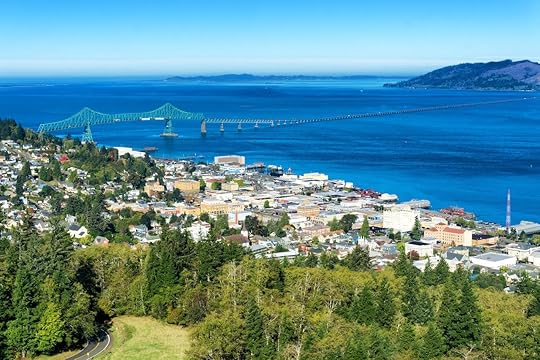
When a plane touches down on a runway and you see a new place with fresh eyes, it’s easy to feel — even for just a moment — like an explorer venturing to a blank space on a map. The first travelers weren’t vacationers booking scuba tours but explorers intent on demystifying what was unknown to their own part of the world. While much of the world is pretty well mapped these days, it’s easier than ever to follow in the footsteps of those original pioneers with the help of our new series, Modern Trailblazing.
Whether it’s hitchhiking, taking an epic train journey, or road-tripping with a friend across Route 66, journeying through the American West has always been a romantic prospect for travelers the world over. Discovering new stretches of the Colorado River and naming mountain peaks might be out of the question in 2020, but that doesn’t mean you can’t relive the journey of the two men who drew the map in the first place: Lewis and Clark.
Probably because of our elementary school curriculums, Lewis and Clark are among the first names that come to mind when we think of American adventurers. Their journey began in 1804 when president Thomas Jefferson tasked Meriwether Lewis with exploring the lands acquired in the Louisiana Purchase, west of the Mississippi River. Beginning in St. Louis and ending near present-day Astoria, Oregon, in 1805, the trip covered 8,000 miles and resulted in a wealth of geographic, social, and ecological information about previously uncharted stretches of the continent. The expedition doesn’t capture the imagination because of its scientific learnings, however, but because it’s the first documented American road trip into the West.
Now, the roads are paved, rivers easily crossed, and your chances of contracting smallpox mid-journey slim. Here’s how to follow Lewis and Clark’s road — a little more comfortably — through the West.
St. Charles, Missouri, to Yankton, South Dakota

Photo: Google Maps
The journey officially began in May in St. Charles, Missouri, about 30 minutes outside St. Louis, where Lewis joined up with William Clark and the 43-member “Corps of Volunteers.” From St. Charles, the company headed up the Missouri River in three boats, battling heat, insects, and strong currents through lands inhabited by Native Americans. They bartered with the tribes and presented them with peace offerings but also informed them that their lands now belonged to the United States (who would provide them with military protection). In Council Bluffs, Iowa, and Yankton, South Dakota, the expedition held peaceful councils with the Odo and Sioux tribes respectively.

Photo: Rob Neville Photos/Shutterstock
It might be more practical to begin your road trip in St. Louis, but you should still make a pit stop in St. Charles, even if only for a few hours. The city of 70,000 people, where the Lewis and Clark expedition began in 1804, was the first permanent European settlement on the Missouri River. Any visit to St. Charles should include its Historic District, whose buildings date back to the early 1800s. St. Charles is no St. Louis, and you probably wouldn’t spend a whole week here, but don’t leave without checking out the Lewis and Clark Boat House and Museum, or the memorial dedicated to the two explorers on the west bank frontage where their campsite used to be.
Of course, the Lewis and Clark expedition used keelboats and canoes as their primary means of transportation, but you’ll be forgiven for taking a car instead. Unlike the two explorers, you have the luxury of resting and fueling up at major cities after departing from St. Charles. You’ll pass right through Columbia and Kansas City on your way west along I-70, as you make your way to Council Bluffs, the former site of Lewis and Clark’s meeting with the Odo Tribe. There, they established a campsite now known as Fort Atkinson — the first US military post west of the Missouri River, and a symbol of the earliest friendly formal contact with Native Americans. Later serving as the first school and library in Nebraska, the fort’s original structures still remain and can be visited.
As you continue north to Yankton, South Dakota, where the expedition treated with the Yankton Sioux, make sure to pitstop at the Ionia Volcano on the banks of the Missouri River. You probably weren’t expecting to come across a volcano in Nebraska, but located right off Rt. 12 near Newcastle, this “volcano” is one of the more unique geological features on your trip — even if it isn’t exactly Mt. Hekla. The expedition encountered the Volcano on August 24, 1804, and Clark noted that the 190-foot-high bluff appeared to be on fire, emitting smoke and bearing a coal-like appearance. Although the sporadic eruptions have since been proven to be caused by the high temperatures of the damp shale rock, and not actual volcanic activity, it’s still called a “volcano” and considered sacred by the local Ponca Tribe.

Photo: Trina Barnes/Shutterstock
Continue north through South Dakota at your leisure, visiting the Cheyenne River Reservation and Standing Rock Indian Reservation along the way. These sites will give you a greater appreciation for a culture that has been in the region since long before Lewis and Clark’s journey. At the Cheyenne Reservation, check out the Timber Lake and Area Museum, containing items from the Cheyenne River Sioux Tribe. At Standing Rock, you can take a much-needed break from the road and go boating and fishing on Lake Oahe. And if you’ve been longing for some urban fun after spending dozens of hours driving through seemingly empty country, Bismark, North Dakota, is just a few hours north of the reservations and the perfect place to refuel for the next leg of your journey.
Washburn, North Dakota, to Great Falls, Montana
After a hostile encounter with the Teton Sioux, Lewis and Clark came upon Mandan and Minitari natives near present-day Washburn, North Dakota. They set up a camp for the winter along the Missouri River called Fort Mandan and spent the next five months there hunting, making canoes, and refreshing their resources. This is also where they met Sacagawea, the Shoshone teenager who famously joined their expedition, along with her husband, Toussaint Charbonneau.
While the story of Sacagawea we’re told as children glazes over the tragic parts of her life (she was captured and sold to the French trapper to at around age 12 and died shortly after the expedition) she is rightfully revered for helping Lewis and Clark immensely with both navigation and communication. Before crossing through Montana, some of the crew was sent back to St. Louis with valuable maps, geological samples, and other scientific information. The rest continued along the Missouri River, stopping near Great Falls, Montana, to abandon Lewis’s leaky boat.

Photo: Joseph Sohm/Shutterstock
Under an hour from Bismarck is the fort where Lewis and Clark passed the winter of 1804-05. Thankfully you don’t have to spend all winter at Fort Mandan, but you should absolutely set aside a few hours to visit the Lewis & Clark Interpretive Center, which is now housed there. Exhibits and hundreds of period artifacts will paint a clearer picture for you of the legendary explorers’ road and the tribulations they faced.

Photo: Traveller70/Shutterstock
Not too far from Fort Mandan, you can visit the place where Lewis and Clark traded with the Mandan and Hidatsa tribes. Near the confluence of the Knife and Missouri Rivers, the Knife River Indian Villages are still standing in the form of earthlodge dwellings, cache pits, and travois trails. This is where Sacagawea was living at the time she met Lewis and Clark and joined their expedition, making these villages one of the most pivotal sites on their trip.
From there, head west through Montana until you reach the White Cliffs, a dramatic geological area inside the Upper Missouri River Breaks National Monument. The cliffs are formed of white sandstone, rising about 300 feet, and assume an almost architectural quality. The expedition passed through the cliffs on May 31, 1805, and inspired Lewis to write extensively and romantically about them.

Photo: vagabond54/Shutterstock
About three hours southwest of the White Cliffs, make a pit stop in Great Falls. Hopefully by this point your car is faring better than Lewis’s boat, and you’ll be able to stop and appreciate the series of five waterfalls just outside town. Great Falls is also home to the C.M. Russell Museum — a monument to the artist famous for his images of the American West.
Through the Continental Divide
One of the trip’s most arduous portions was the crossing of the Continental Divide. With Sacagawea’s assistance acquiring horses from the local Shoshone tribe, the expedition navigated Idaho’s Lemhi Pass through the Beaverhead Mountains, over 7,000 feet above sea level. Once safely through the pass, they took the treacherous Lolo Trail through the Bitterroot Mountain Range. Struggling with inclement weather, exhaustion, frostbite, and hunger, this was said to be the most difficult leg of the journey. Much needed respite was found along the banks of the Clearwater River, where the Nez Perce tribe fed and cared for the travelers before sending them on their way.

Photo: Philip Bird LRPS CPAGB/Shutterstock
It’s just under a five-hour drive from Great Falls to the Lemhi Pass, but at least you won’t be contending with frostbite and starvation. Just before crossing into Idaho, check out Beaverhead Rock, located right off highway 41. The Shoshone people named the rock for its resemblance to a beaver, and upon seeing it on the expedition, Sacagawea knew she was near the home of her relatives.
Crossing the border from Montana to Idaho means crossing the Lemhi Pass, as Lewis and Clark once did. Sitting right on the Continental Divide and spanning two miles across the border, the pass is surrounded by the Beaverhead-Deerlodge National Forest and the Salmon-Challis National Forest, with stunning views of the trees and mountains. Accessible via Lemhi Pass Road in Montana and the Lewis and Clark Highway in Idaho, the pass consists of a single dirt track, making it easy to imagine the expedition of explorers that once rambled there.
The drive following the pass might be the most scenic of your entire journey. Rt. 93 winds north along the edge of the Selway-Bitterroot Wilderness, known for its snow-capped mountains, rugged forests, and abundance of elk and bighorn sheep (so keep an eye out for elk crossings).

Photo: Joseph Sohm/Shutterstock
The modern-day Lolo Trail extends from Weippe Prairie to the Lolo Pass along the Idaho mountains. The Lolo Motorway is the best way to take the modern-day trail without actually loading up a packhorse. It might be a highway now, but that doesn’t mean the journey is smooth. The road through the mountains is single-lane, bumpy, narrow, and twists around steep ridges. It’s perfectly safe as long as you’re paying attention, but it will give you a semblance of an idea of the hardships Lewis and Clark faced during their passage.

Photo: Robert Travis/Shutterstock
Before embarking on the road, stop at the Lolo Pass Visitor Center on the Montana-Idaho border where you can learn more about Lewis and Clark’s journey through the region, and even take a short interpretive walking trail. Also be sure to check out Packer Meadow in the Clearwater National Forest just east of the visitor center, where hiking trails wind through open glades and along Pack Creek.

Photo: Danita Delmont/Shutterstock
Emerging from the mountainous trail, you’ll be a mere three-hour drive from Kennewick, WA. The ideal place to rest before the final leg of your journey, Kennewick is home to the East Benton County Historical Museum, which highlights the experience of the pioneers who followed in Lewis and Clark’s footsteps. Just north of the city is the Sacagawea Heritage Trail, a scenic loop along the Columbia River through Richland, Kennewick, and Pasco, commemorating the expedition that once passed through there.
Astoria, Oregon
In November of 1805, the expedition finally arrived at the Pacific Ocean after sailing up the Snake and Columbia Rivers in dugout canoes. By Christmas they had constructed Fort Clatsop near present-day Astoria, Oregon, where they spent the winter battling flu-like symptoms, contending with harsh rain, and trying to recover before spring. By March they left Fort Clatsop behind and began the return journey home.
You probably won’t be paddling west across the Columbia River in canoes like the expedition, but on the final leg of your trip, you’ll find yourself at the river’s mouth in Astoria, Oregon. Fittingly, the Pacific Ocean will mark the end of your journey, just as it did for Lewis and Clark.

Photo: Lara J/Shutterstock
Check out Hat Rock State Park, just south of Kennewick. A 70-foot high formation of exposed basalt, Hat Rock was noticed by Clark from his canoe. He remarked that it looked like a hat resting upon the landscape and later included it his notes, in a list of landmarks used to mark distances. Not too far off Highway 730 near Umatilla, Hat Rock is an easy stop and an interesting piece of geography. There are also boating, hiking, and fishing opportunities in Hat Rock State Park, as well as access to the Lewis and Clark Commemorative Trail.

Photo: Danae Abreu/Shutterstock
Under two hours from Hat Rock is the Rock Fort Campsite in The Dalles. The campsite marks the spot where Lewis and Clark rested for three nights, repairing canoes, hunting, taking notes, and meeting with various local tribes. They also stopped here during the return journey. Now, a series of trails wind through the five-and-a-half-acre property, with wayside panels to explain the historical significance. From the campsite you can also get a clear, unobstructed view of Mt. Hood in the distance.

Photo: Sean Pavone/Shutterstock
The next major city you’ll encounter will probably be familiar to you. Entering Portland pretty much marks the moment you can celebrate surviving the wilderness and feel relieved — or saddened — that the end is in sight. You’ve come a long way. Reward yourself with a few local beers at some of Portland’s famous breweries, like Deschutes Brewery Portland Public House, Kells Brewery, and 10 Barrel Brewing. And, of course, don’t skip out on the nightlife. Portland has one of the best live music scenes in the northwest, with a variety of eclectic, unique acts performing every night. Revolution Hall and the Doug Fir Lounge are two of the city’s mainstays, and it’s definitely worth spending a night or two to check them out.

Photo: Jess Kraft/Shutterstock
Even if you’re hungover the next day, the home stretch should be a piece of cake. A drive of less than two hours will bring you the terminus of both your journey and the Columbia River, in the city of Astoria on the coast of the Pacific. This city of 10,000 people isn’t quite as bustling as Portland, but it’s the important home of the Lewis and Clark National Historical Park. The park includes an educational replica of Fort Clatsop, reenactments featuring rangers in period attire firing muskets, and hide-tanning demonstrations. There are also many hiking trails through the surrounding forest, some with beautiful coastal views.
To cap off your epic trip, spend your final night at the Chart Room, the widely beloved dive bar where everyone in Astoria gathers after 1:00 AM. Since venturing into a dim dive bar is basically the modern equivalent of a 19th-century explorer forging through a foggy mountain pass, it’s the ideal way to end your road trip. 

More like this: The 25 coolest towns in America: 2019
The post Channel your inner pioneer with this Lewis and Clark-inspired road trip appeared first on Matador Network.

How to say ‘I love you’ in 68 countries

Valentine’s Day is quickly approaching, and if there is one thing you need to be prepared for on February 14, it is to say “I love you.” Whether your special someone does not speak the same language as you do, and you want to make sure you get your point across, or you simply want to impress your beloved on this romantic day by giving them a world tour of this beautiful sentiment, here is how to say “I love you” in 70 languages.
Africa
Ethiopia: In Ethiopia, you would say, ewedihale lehu (ē wĕd hä′ lō) to a man and ewedishale hu (ē wĕd shä′ lō) to a woman, according to the Amharic language.
Ghana: Show your love and appreciation for a Ghanaian by saying, Me dor wo (mē dō wū).
Malawi: The language spoken in Malawi and Zimbabwe is Chichewa. “I love you” in Chichewa is Ndimakukondani (nn-dĭ mä kŭ kōn dä).
Lesotho: In Sesotho, the local language in Lesotho, “I love you” is kea u rata.
South Africa: Multiple languages are spoken in South Africa. In Afrikaans, you would say Ek het jou lief to a romantic partner and Ek is lief vir jou to a friend. In Xhosa, “I love you” is Ndiyakuthanda, which slightly differs from Zulu where the expression is Ngiyakuthanda.
Sudan: In Sudan, “I love you” is Abdi bogoh ka anjeun.
Asia
Armenian: Express your love in Armenia by saying Yes kez sirumen.
Azerbaijan: In the local language of Azeri, “I love you” is Men seni sevirem.
Bangladesh: Bangladesh, where Bengali is spoken, expresses love by saying Amio tomake bhalobashi.
Cambodia: In Cambodian, you’d say Soro lahn nhee ah.
China: In Mandarin, “I love you” is wŏ ài nĭ.
Indonesia: In Indonesia, the expression for love is Aku cinta kamu.
Israel: “I love you” in Hebrew is Ani ohevet otchah to a man and Ani ohev otach to a woman.
The Philippines: If you find yourself in the Philippines over Valentine’s day, say Mahal kita.
Japan: The expression meaning “I love you” in Japanese is aishiteru.
Laos: In Lao, the language spoken in Laos, you’d say Khoi hak jao.
Malaysia: In Malay, “I love you” is Saya cinta pada mu.
Mongolia: Mongolians say “I love you” to each other using Bi chamd hairtai.
South Korea: In Korean, the expression for “I love you” is Sarang hae.
Thailand: Thai has two different expressions for men and women. To a man, you would say Chan rak khun, and Phom rak khun to a woman.
Turkey: In Turkey, “I love you” is Seni seviyorum.
Vietnam: In Vietnam, you’d say Em yeˆu anh to a man, and Anh yeˆu em to a woman.
Uzbekistan: The expression meaning “I love you” in Uzbek is Men seni sevaman.
Oceania
Fiji: In the island nation of Fiji, “I love you” is Au lomani iko.
Guam: According to the Chamorro language of Guam, “I love you” is Huguaiya hao.
Hawaii: In Hawaii, the expression to use this Valentine’s Day is Aloha wau iâ `oe.
New Zealand: Besides English, which is spoken in New Zealand, the Maori language is still used by the indigenous population.“I love you” in Maori is Kei te aroha au i a koe.
Samoa: Samoan people express love by saying Ou te alofa ia te oe.
Europe
Albania: Say “I love you” in Albania by using Të dua.
Belarus: In Belarusian, “I love you” is Ya tabe kahayu.
Bulgaria: Should one be in Bulgaria for Valentine’s Day, they’d say, Obicham te.
Czech Republic: In Czech, “I love you” is miluji tě.
Croatia: “I love you” in Croatian is: Volim te.
Denmark: The Danish say Jeg Elsker Dig as an expression of their love.
Estonia: Say “I love you” in Estonia by using Ma armastan sind.
France: The French use, Je t’aime.
Finland: In Finnish, say Minä rakastan sinua.
Germany: Tell a German you love them by saying. Ich liebe dich.
Greece: In Greek, “I love you” is Σε αγαπώ, pronounced “Se agapó̱.”
Hungary: The expression meaning “I love you” in Hungarian is Szeretlek.
Iceland: In Icelandic, you’d say Eg Elska Tig.
Ireland: In Irish Gaelic, “I love you” is Gráim thú (graw-im hoo).
Italy: In Italian, “I love you” is Ti amo.
Latvia: The Latvians use Es tevi milu.
Lithuania: In Lithuanian, you’d say, Tave myliu.
Maltese: The Maltese say Jien inhobbok.
Netherlands: In Dutch, “I love you” is Ik hou van jou.
North Macedonian: In North Macedonia, they say, Te sakam.
Poland: In Polish, “I love you” is kocham ciebe.
Portugal: In Portuguese, you’d say, Amo te.
Romania: In Romania, say, Te lubesc.
Russia: “I love you” in Russian is Ya tebya liubliu.
Scotland: In Scottish Gaelic, the expression meaning “I love you” is Ttha gra dh agam ort. When expressing deep care, Scottish Gaelic speakers say Tha gaol agam ort.
Spain: Spain has various languages depending on the region. In Northern Spain where Basque is spoken, “I love you” is Maite zaitut, while in Catalan, spoken in Barcelona and the Catalonia region, you’d say T’estimo. In Castellano, often referred to as “Spanish,” you’d say Te amo.
Slovakia: In Slovak, say ľúbim ťa.
Slovenia: In Slovenian, the expression for love is ljubim te.
Sweden: In Swedish, “I love you” is Jag alskar dig.
Ukraine: In Ukranian, say Ya tebe kaha yu.
Wales: In Welsh, “I love you” is Rwy’n dy garu di (roo-in dū garry dee).
North America
United States: Besides the official language, English, some of the native people of North America speak Cheyenne. The language is a part of the Algonquian family, which was predominant in today’s Montana and Oklahoma. In Cheyenne, “I love you” is Nemehotatse.
Mexico: I love you in the Spanish used in Mexico is Te quiero.
South America
Argentina, Paraguay: In Guaraní, which is one of the native languages of Argentina and Paraguay, “I love you” is Rojhayhû.
Bolivia: In Aymara, one of Bolivia’s native languages, “I love you” is Munsmawa.
Bolivia, Peru, Ecuador: In these three countries, Quechua is an indigenous language that was spoken before the Spanish conquest. In Quechua, “I love you” is Kuyayki when it’s meant as a romantic sentiment and Munayki if you love someone as a friend.
Brazil: In Brazillian Portuguese, you’d say Eu te amo. 

More like this: The best vacation spots for sexually daring couples
The post How to say ‘I love you’ in 68 countries appeared first on Matador Network.

Where to try kaiseki

In A Simple Art, Shizuo Tsuji’s treatise on Japanese cooking, the author writes, “Japanese cuisine is deceptively simple, its ingredients are but two: a rather delicate stock (dashi) made from konbu (giant kelp) and flakes of dried bonito, and shoyu, Japanese soy sauce.”
In 2013, Japanese was designated as an intangible element of Japan’s cultural heritage by UNESCO. Today, Japanese cuisine inspires menus the world over, and restaurants serving Japanese food are some of the most highly regarded restaurants. Seldom do people think of it as simplistic. But that, in fact, is its essence. To understand the roots of this simplicity, one needs to look no further than Japan’s traditional styles of eating: kaiseki and shojin ryori.
Kaiseki ryori
Kaiseki ryori started in Japanese tea houses during the 16th century. The famous Buddhist monk turned Japanese tea master, Sen No Rikyu, insisted on a simple meal that remained true to the precepts of the tea ceremony: harmony with nature, the seasons, and oneself. The name comes from kaiseki (a warm stone that monks would place against their bellies to ward off hunger during times of food abstinence) and ryori (cuisine/cooking).
The original kaiseki ryori philosophy — a basic meal that staves off hunger — has slowly evolved over the last 500 years to align with modern appetites and aesthetic preferences. Japan’s aristocratic classes made a focus on presentation and choice of ingredients commonplace.
Today, kaiseki ryori is a multi-course meal that represents harmony between the eater and the eaten. Kaiseki chefs have creative control over the preparation of food, and each meal features a delicate balance between the texture and flavor of each dish and a focus on igniting all five senses. It’s an artistic dining experience that should feel like an unbroken symphony of subtle tastes dancing lightly across the tongue. Don’t expect bold flavors and powerful aromas in a kaiseki meal, the base ingredients will do the talking. Fresh and seasonal produce is of paramount importance: locally farmed fruit and vegetables, Pacific seafood trawled onto land the morning of service, or light herbs and flowers.

Photo: mnimage/Shutterstock
The number of courses in any given kaiseki meal varies, though there are several types of dish you’re likely to encounter:
Sakizuke: an appetizer similar to an amuse-bouche
Hassun: one type of seasonal sushi with smaller side dishes
Mukōzuke: seasonal sashimi
Takiawase: seasonal vegetables with meat, fish, or tofu
Futamono: a “lidded dish” that’s typically a soup made with seasonal vegetables with or without fresh fish
Yakimono: flame-grilled fish or meat
Su-zakana: a vinegared dish that serves as a palate cleanser
Hiyashi-bachi: a summer dish of chilled seasonal vegetables
Naka-choko: a light and acidic soup that serves as a palate cleanser
Shiizakana: a main course like hot pot or grilled meat
Gohan: a rice bowl that often contains seasonal vegetables
Kō no mono: seasonal pickled vegetables (also called tsukemono)
Tome-wan: miso soup that’s often served with rice and pickled vegetable dishes as the penultimate course
Mizumono: a dessert often made with seasonal fruit
Where to eat kaiseki ryori in Japan
A typical kaiseki meal will not involve all of the above, but double-figured courses are not uncommon. Combined with several flasks of sake, kaiseki will leave you satisfied. Yet there is one drawback to modern kaiseki: It has become inexorably intertwined with Japanese fine dining, and, as such, can cost a small fortune.
One of the best ways to avoid the lofty price tags is to stay in a ryokan (a traditional Japanese inn) where a kaiseki dinner is included in the price. Alternatively, you can opt to eat kaiseki at lunch rather than dinner. Many restaurants offer reduced lunch prices in places like Tokyo where there’s lots of restaurant competition. The fine dining restaurant Kozue in Shinjuku, for example, serves kaiseki-style lunch for a fraction of the price of its dinner menu.
Shojin ryori

Photo: Wissuta.on/Shutterstock
Shojin ryori is even more about minimalism and culinary austerity than kaiseki. Shojin ryori is a plant-based meal eaten as a form of self reflection (shojin means “to focus while going forward”). It started in 13th century Japan with the rise of Zen Buddhism. It’s still the favored dining style for Zen Buddhist monks in Japan, and is also popular with vegetarian and vegan travelers.
Seasonality is a key component of shojin ryori. Japan traditionally divided its year into 72 microseasons, each with specific ingredients to be used in a shojin ryori meal. More ingredients are now available in any specific growing season, but seasonal produce is still an inextricable element of shojin ryori.
There are traditional methods of preparation and ordering that’ve remained intact over generations. First there’s zensai (small bites), followed by aemono (a sauce-based dish), nimono (a simmered dish), yakimono (grilled dish), and a fruit-based kanmi (dessert) that’s served with tea. The food usually comes in lacquerware bowls atop tray stands.
Common shojin dishes include seasonal vegetable tempura; tofu-based dishes; various seaweeds, spinach, mushrooms, Japanese pickles (especially in winter), and carbohydrates like rice and soba (buckwheat) noodles. Like a kaiseki meal, subtlety and capturing the full flavor profile of each ingredient is important.
Eating shojin ryori in Japan

Photo: Andriy Blokhin/Shutterstock
Many restaurants in Japan specialize in shojin cuisine, but it should be eaten at a Zen temple for the most authentic experience. Here, the meal is prepared in the traditional style by monks or nuns who have perfected the craft. In Kyoto, one of the heartlands of Japanese Zen Buddhism, guests have sampled shojin ryori from Nanzen-ji Temple for over 300 years. Zenko-ji Temple in Nagano is another one of Japan’s most important Buddhist structures, dating back to the seventh century. Restaurants serving shojin ryori can be found along the flanks of the old flagstone streets running up to the temple gate. Fuchinobo is one of the most popular. 

More like this: Staying at a ryokan is a must in Japan. Here’s what to expect.
The post To understand Japanese cuisine, start with kaiseki and shojin ryori appeared first on Matador Network.

New Shinkansen will travel at 311mph

Getting from Tokyo to Osaka is a two and a half hour journey, but soon — well, in 17 years — it might take just 67 minutes. A new initiative called the Linear Project is being developed by the Japan Railways Group to facilitate travel across Japan at record-breaking speeds. The project would revolve around the Linear bullet train, which initially runs on wheels before gathering enough speed to retract its wheels and continue running while levitating four inches above the ground. The elimination of friction between the wheels and track allows the train to travel at speeds of up to 311 mph.
The train would be capable of taking passengers from Tokyo to Nagoya in 40 minutes, or Tokyo to Osaka in just 67 minutes. Unfortunately, the commute isn’t exactly going to be shortening anytime soon. The project will reportedly cost $50.5 billion, and take until 2037 for all the infrastructure to be built (2027 for Tokyo to Nagoya). You won’t exactly be enjoying any outside scenery, either, as 86 percent of the track will be underground to avoid areas with strong earthquake tremors.
Japan’s current bullet trains are already among the fastest in the world, traveling at speeds of 199 mph. And in 50 years of operation there have been zero accidents resulting in passenger injury or death. 

More like this: 7 of the world’s fastest trains and where they can take you
The post Japan’s new levitating train will travel at 311 mph between its biggest cities appeared first on Matador Network.

Coronavirus screening long lines

The US government is taking precautions to make sure travelers who have traveled to China recently or are entering the country from China are thoroughly screened for coronavirus. Unfortunately, this also means some incredibly long lines at the 11 airports designated as “screener airports.”
All flights coming from China are being routed through these airports, with special screening measures in place at each to prevent the virus’ spread. The extra screening means longer lines; some people are even reporting customs lines that are six hours long, as travelers are being asked to fill out questionnaires detailing their entire trip, and undergo CDC screening that includes getting their temperature taken. And if you’ve been in the Chinese province of Hubei in the past 14 days, you’ll be welcomed home by a mandatory two-week quarantine.
The 11 coronavirus screener airports in the US include:
San Francisco International Airport
Seattle-Tacoma International Airport
Hawaii’s Daniel K. Inouye International Airport
Chicago O’Hare International Airport
Houston’s George Bush Intercontinental Airport
Dallas-Fort Worth International Airport
Hartsfield-Jackson Atlanta International Airport
Detroit Metro Airport
John F. Kennedy International Airport
Newark Liberty International Airport
Washington Dulles International Airport
On Friday, President Trump instituted tighter travel restrictions for foreign nationals who have been in China for the past two weeks, denying them entry to the US.
Apparently, however, if you have the Mobile Passport feature on your phone, you might be able to skip the craziness. One Twitter user claims she was able to avoid an 800-person line at SFO due to the Mobile Passport app. 
Corona Virus chaos at SFO customs. ~800 person line dodged with mobile passport
Matador Network's Blog
- Matador Network's profile
- 6 followers



